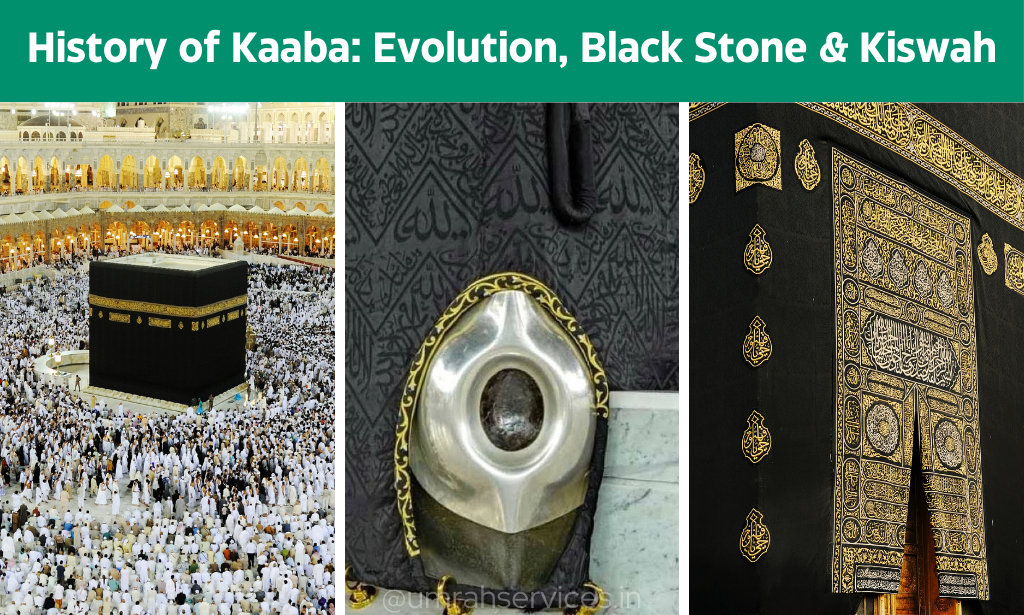
In Islam, Muslims pray five times a day facing in the direction of the holy Kaaba (Qibla in Arabic) located in the centre of Mecca, Saudi Arabia. It’s important to understand the history of Kaaba and its evolution. The Arabic word “Ka’b” meaning a cube gave rise to the Kaaba, a square-shaped monument draped in beautiful black silk and cotton veil etched with gold. The Kaaba is the holiest site, situated at the centre of the most prominent mosque in Islam, Masjid Al-Haram.
It is also the final destination in the sacred pilgrimage of Hajj and Mecca. The Kaaba has a rich history and prominent religious significance in the modern day with over billion followers of Islam praying in its direction five times a day. Also the muslims believed that Holy Kaaba was actually constructed by Prophets Ibrahim (AS) and Ismail (AS) and the history of Kaaba is almost 5000 years old. It has gone through various phases of reconstruction over the centuries.
Also Read:- Guide to Ziyarat in Mecca and Medina
What is the History of Kaaba
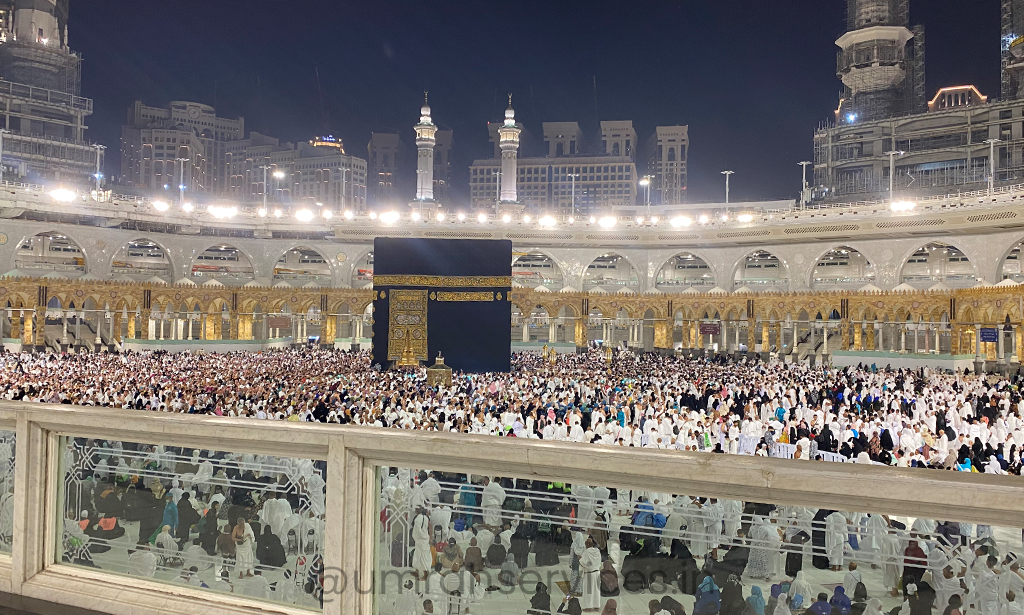
Muslims believe that the Kaaba was constructed by the Prophet Ibrahim (AS) and his son Prophet Ismail (AS) on command of the almighty. When it was first built, it was a simple rectangular structure with no roof, four walls and two entrances. Prophet Jibril (AS) is believed to have brought Hajr e Aswad (the black stone) from heaven to be placed in the house of God by Prophets Ibrahim and Ismail.
The then-powerful Quraysh Tribe that ruled Mecca rebuilt the pre-Islamic Kaaba using various woods and bricks. The entry to the Kaaba was also heightened to protect it from flooding as it was built on a floodplain.
Evolution of the Kaaba- An Overview
In the days before the rise of Islam, according to many historians, Mecca was a well-known centre for trade and Kaaba served as a holy site for various tribes across the Arabian peninsula that worshipped idols in and around the Kaaba. Statues of various Pagan gods including Hubal were placed in and around the Kaaba.
The return of Prophet Muhammad (PBUH) to Mecca from Yathrib, now Medina in 629/630 CE after being previously driven out in 620 CE marked a period where the Kaaba became a focal point for Muslim worship and pilgrimage. The Prophet cleansed the Kaaba from idol worship upon his victorious return to Mecca, performed tawaf around it and brought back the monotheistic faith to the holy Kaaba.
Kaaba- Present Day
After the demise of Prophet Muhammad (PBUH), the Kaaba has been extensively modified over the years. First, it was expanded to accommodate the growing number of pilgrims. Later it was rebuilt after being set on fire during the first siege of Mecca. It was bombarded with stones during the second siege of Mecca and later razed by Abd al-Malik, the fifth Umayyad caliph to be built in the cube shape as it was during the Prophet’s time.
Interesting Facts About the Holy Kaaba
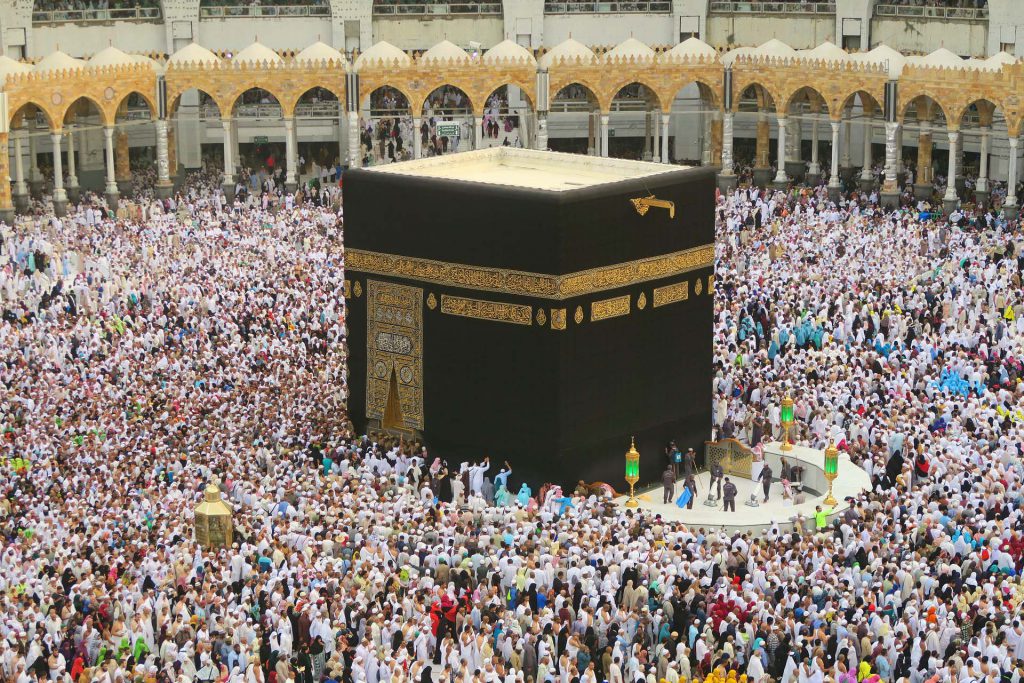
The Holy Kaaba located in the centre of Mecca is one of the most revered places on earth for Muslims globally. Billions of Muslims pray in the direction of Qibla, i.e., the Kaaba. Although the holy Kaaba is a well-known religious structure, many interesting facts are not commonly known. Let’s take a look at a few of the interesting scientific facts;
- The Holy Kaaba was not always Black and it used to be covered in different coloured cloth like red, white and green. The Abbasid dynasty started the tradition of covering the Kaaba in a black veil.
- While the entire global Muslim population prays in Kaaba’s direction, inside the structure you can pay in any direction.
- The world’s most famous cube was not meant to be a cube. Yes, you read that right. The Holy Kaaba originally had a semi-circular area known as Hijr Ismail.
- The keys to the Holy Kaaba have been in the hands of one family for about 1500 years. Prophet Muhammad (PBUH) himself handed over the key to Osman ibn Talha (RA) of the Bani Shaiba family.
- A very interesting fact about the Kaaba is that no birds or planes can fly over it due to the very high magnetic attraction in the area. This has precisely been the reason why despite being such a popular city, Mecca has no airport.
- There are two Kaabas. As narrated by the Prophet Muhammad (PBUH), there is a replica of the Kaaba located right above it in the seven skies known as “Bait al-Ma’mur.”
- The black stone known as the Hajr E Aswad is broken into multiple pieces. It is held together in a silver casing.
- There has been a lot of speculation about the black stone and what it is made up of. Although there has been no confirmation of the material, many believe that it is a stony meteorite, agate, basalt stone, or a piece of natural glass.
Why is the Holy Kaaba Important to Muslims?
The Holy Kaaba is central to Islamic beliefs and holds a special place in the hearts of Muslims globally. Mentioned below are the reasons why Kaaba is considered so important to Muslims;
- The Khaana Kaaba stands as a metaphorical house of Allah SWT and it must be noted that Muslims do not worship the Kaaba but merely pray in its direction.
- The Holy Kaaba is also largely involved in the rituals of Hajj and Umrah pilgrimages undertaken by millions of Muslims yearly.
- The Kaaba is also known as the “Qibla” meaning it is the direction of prayer for Muslims globally.
- Holy Kaaba being a symbol of Supremacy and Oneness of Allah SWT adds another aspect to its importance.
Also Read :- Diffrence between Hajj & Umrah
The History of Kaaba’s Hajr E Aswad- Black Stone Of Mecca
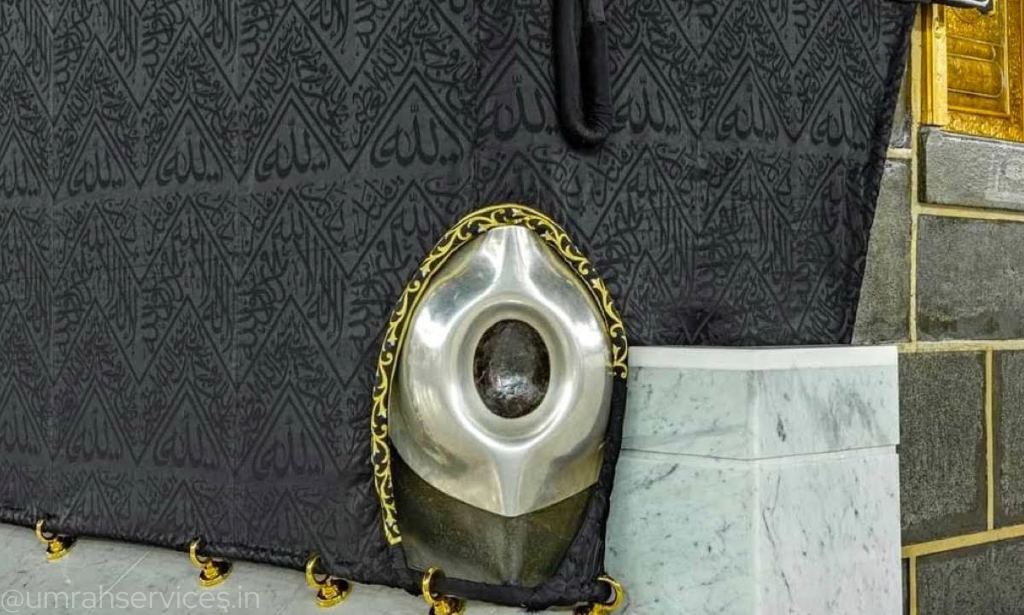
Hajr-e-Aswad, also known as the black stone, is set in silver on the southeastern corner of the Kaaba. As the pilgrims perform Tawaf, the black stone is touched and kissed by the pilgrims following the steps of Prophet Muhammad (PBUH). Hajr e Aswad is where the Tawaf begins and ends.
The black stone is believed to have originated from heaven, brought to Prophet Ibrahim (AS) during the construction of the House of Allah SWT by archangel Jibril (AS). The black stone has a tumultuous history with many attempts of thefts and removals. It was badly damaged and broken into three pieces during the siege of Mecca in 683 CE. It was reassembled in silver as we see it today by Ibn Zubayr.
Also Read:- Sa’i Ritual
Why Do Muslims Kiss the Hajr e Aswad (Black Stone)?
When it comes to kissing the black stone, it is all about following the Sunnah of Prophet Muhammad (PBUH). Muslims try to kiss, touch or point at it if they can’t physically access it because the Prophet (PBUH) did so. It is important to note that even though it is the most revered stone on the face of the earth, it is only a stone, a symbol to love and take pride in. Kissing of stone is not obligatory but pilgrims still do it because they are following every step of the Prophet Muhammad (PBUH) during his pilgrimage.
Importance of Kiswa, Curtain of Kaaba
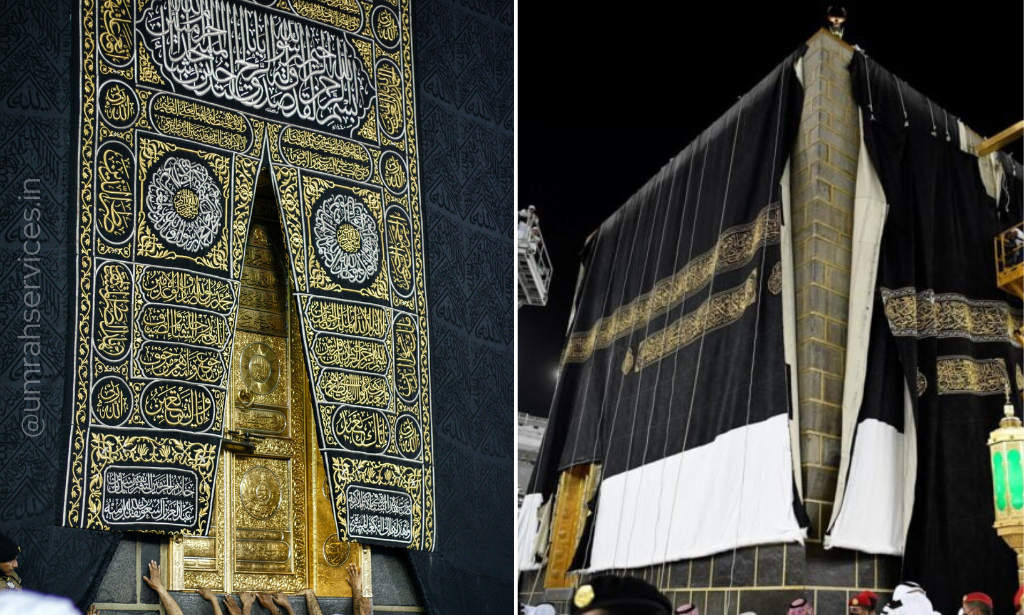
The Kaaba today is one of the most visited holy sites in the world. It is a 15-metre-high cubical structure, and 10.5 metres wide on all sides. The Kaaba is covered in a black veil made of cotton and silk, engraved with gold. The veil is known as Kaaba Kiswa (the black cloth). The kiswa is replaced every year on the ninth day of Dhu al-Hijjah following the footsteps of the Prophet (PBUH).
At first, the Kiswa was produced by the kings of Egypt and Yemen, later being completely taken over by the Egyptians until 1962 when due to conflict it was returned unused. Today, the Kiswa is produced in Mecca itself.
Conclusion
The Kaaba, central to Islamic worship, stands as a testament to profound faith and enduring tradition. From its legendary construction by Prophets Ibrahim and Ismail to its present-day magnificence, the Kaaba encapsulates the spiritual essence of over a billion Muslims. Draped in the revered Kiswah and home to the sacred Hajr-e-Aswad, its rich history and evolution reflect the devotion and unity of the Muslim ummah, making it the pinnacle of the Hajj pilgrimage.
Frequently Asked Questions
Why did Allah create the Kaaba?
The Holy Kaaba was built by Prophet Ibrahim (AS) and Ismail (AS) to serve as the first House (of worship) appointed for mankind located in Mecca. It is full of blessings, and guidance for mankind.
Why did the Kaaba turn black?
In the history of Kaaba, it was not always black. It used to be draped in different coloured cloths such as green, white and red. The Abbasid dynasty started the tradition of the Black veil which is continued to this day by the Saudi Government. There is no religious reason for the Kaaba to be covered in black cloth.
What’s inside the Kaaba in Mecca?
The inside of Kaaba has 3 pillars supporting the roof, multiple suspended lamps, and a small table in the corner. The inside of Kaaba is big enough to accommodate 50 people at once and its doors are open only twice a year now.
How Old is the History of Kaaba?
It is believed that the history of Kaaba is 5000 years old. It has gone through various phases of reconstruction over the centuries.
Who stole the black stone in Mecca?
The Hajr-E-Aswad was stolen by the Qarmatian leader, Abu Tahir al-Qarmati. It was stolen and taken back to their base in present-day Bahrain. The stone was missing for 23 years.
Why do Muslims kiss the black stone?
The black stone also known as Hajr-E-Aswad is believed to have been brought to earth by Angel Jibreel (AS). Located on the eastern corner of the Kaaba, the black stone is kissed by Muslim pilgrims because Prophet Muhammad (PBUH) did so. It is a beautiful Sunnah.
What is the meaning of Ghilaf e Kaaba?
It is the Arabic term for Kishwah – the black veil that is draped around the holy Kaaba.
